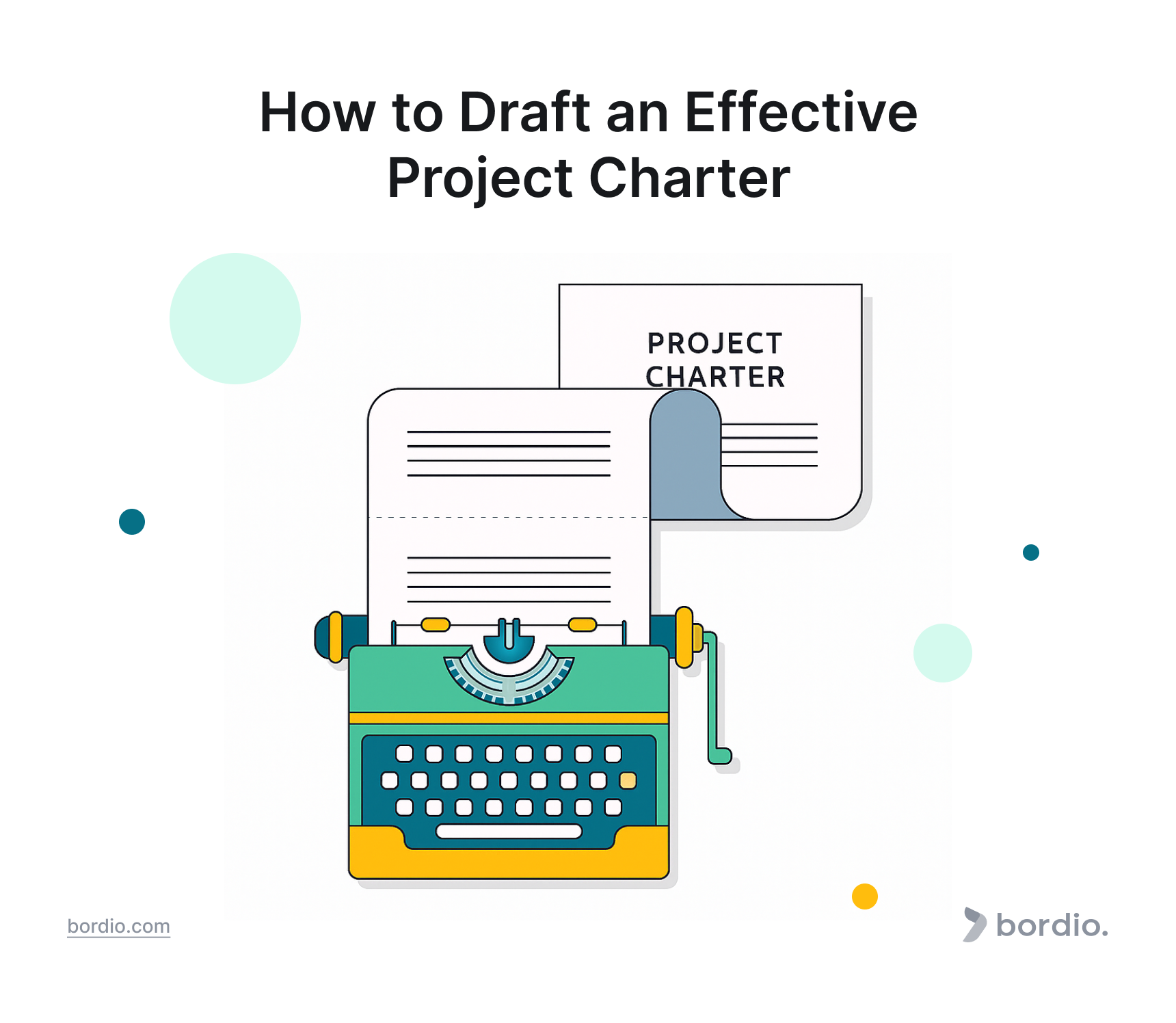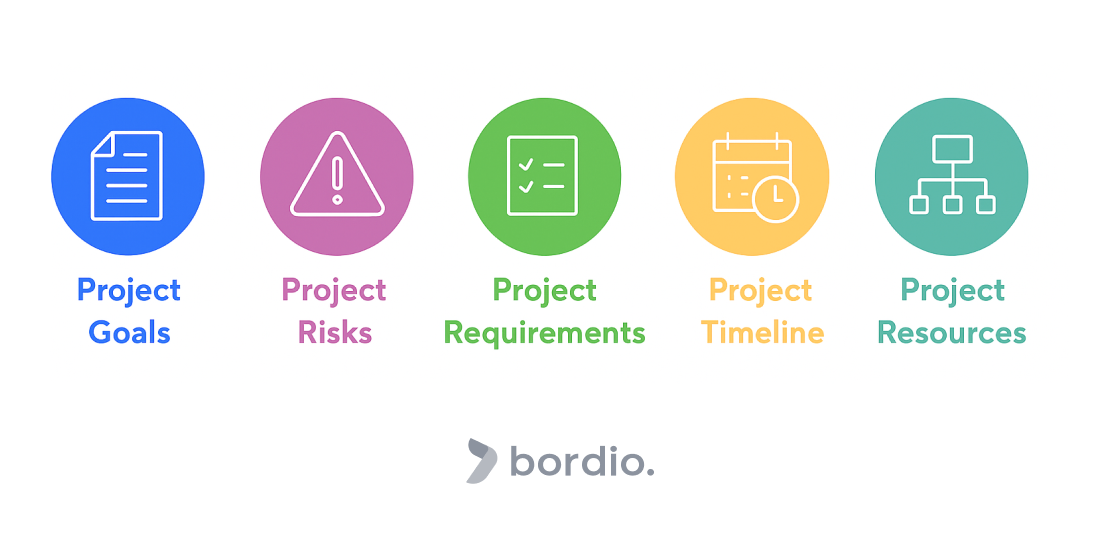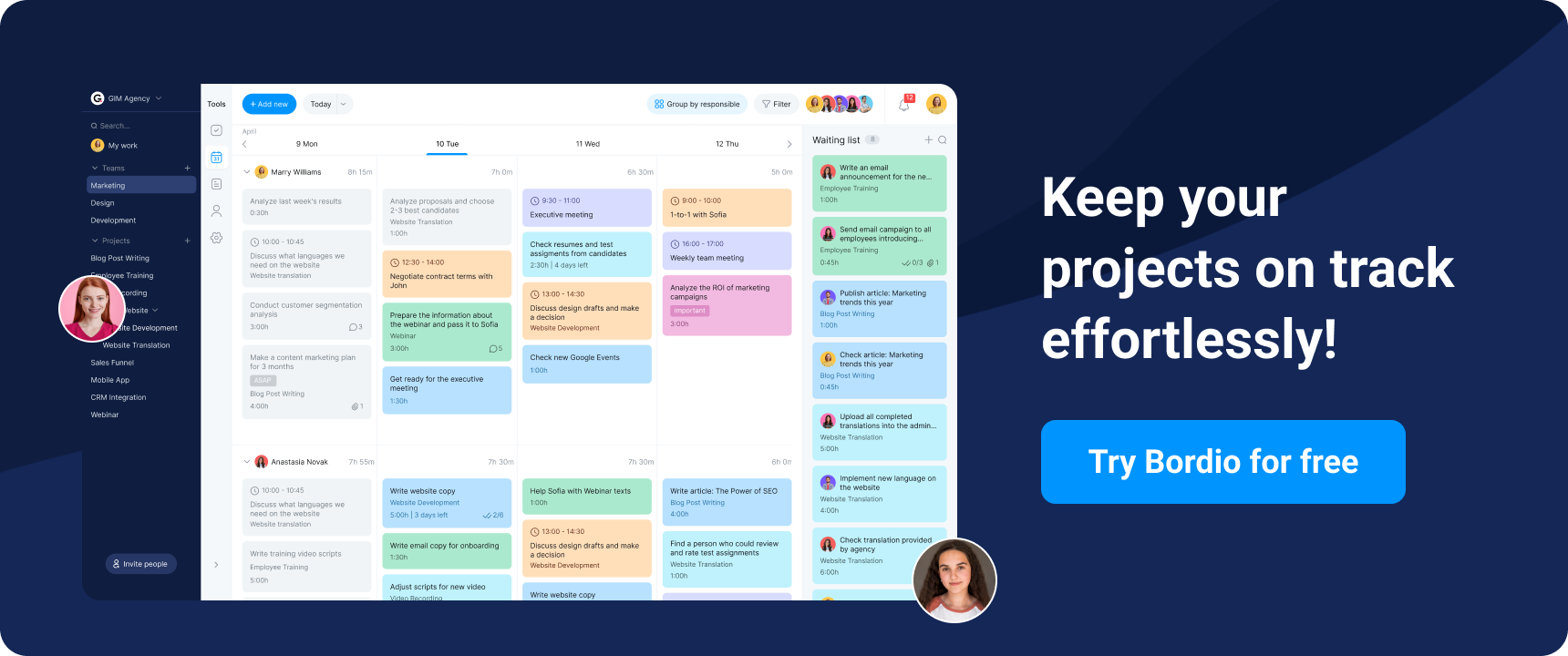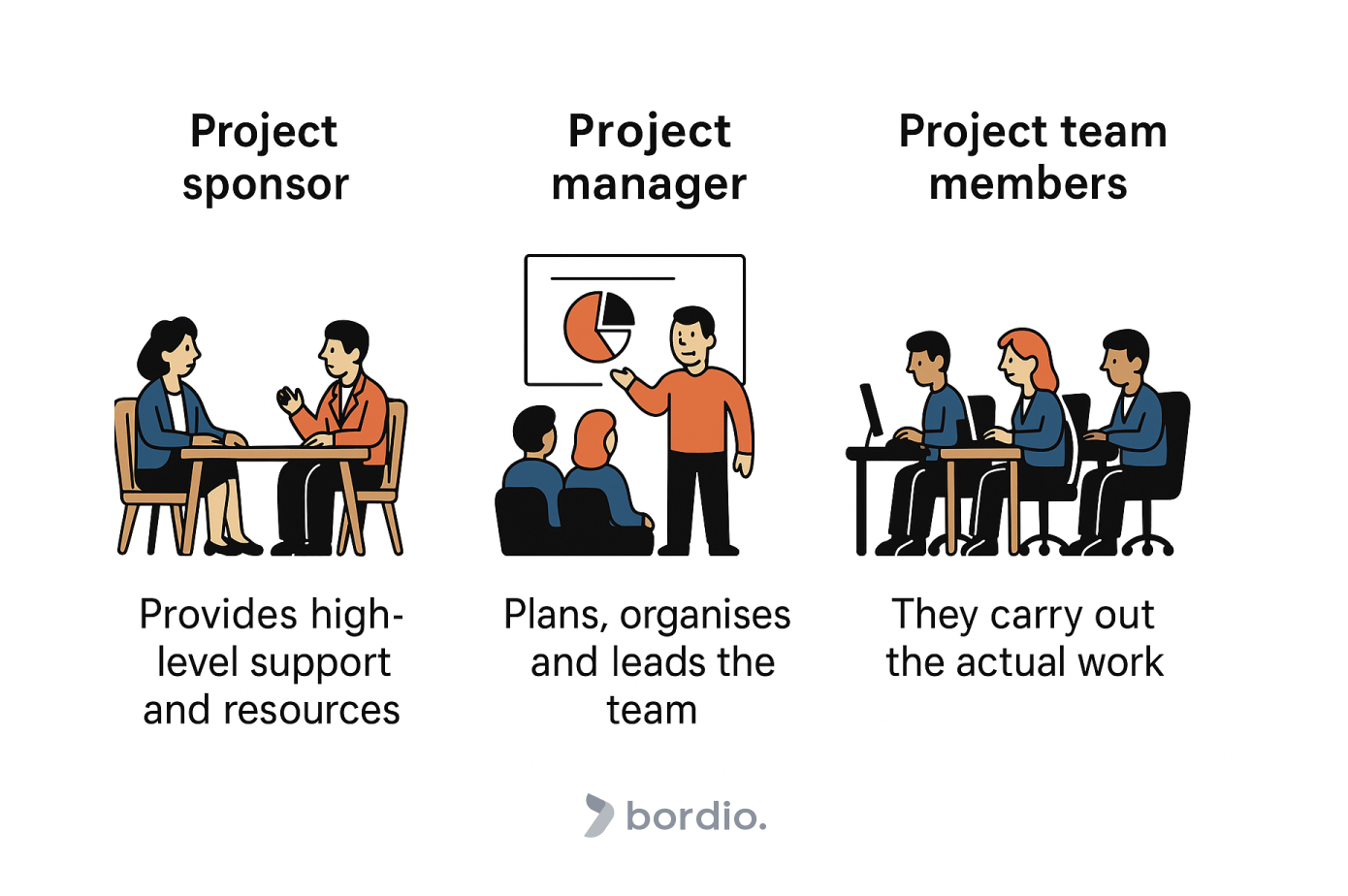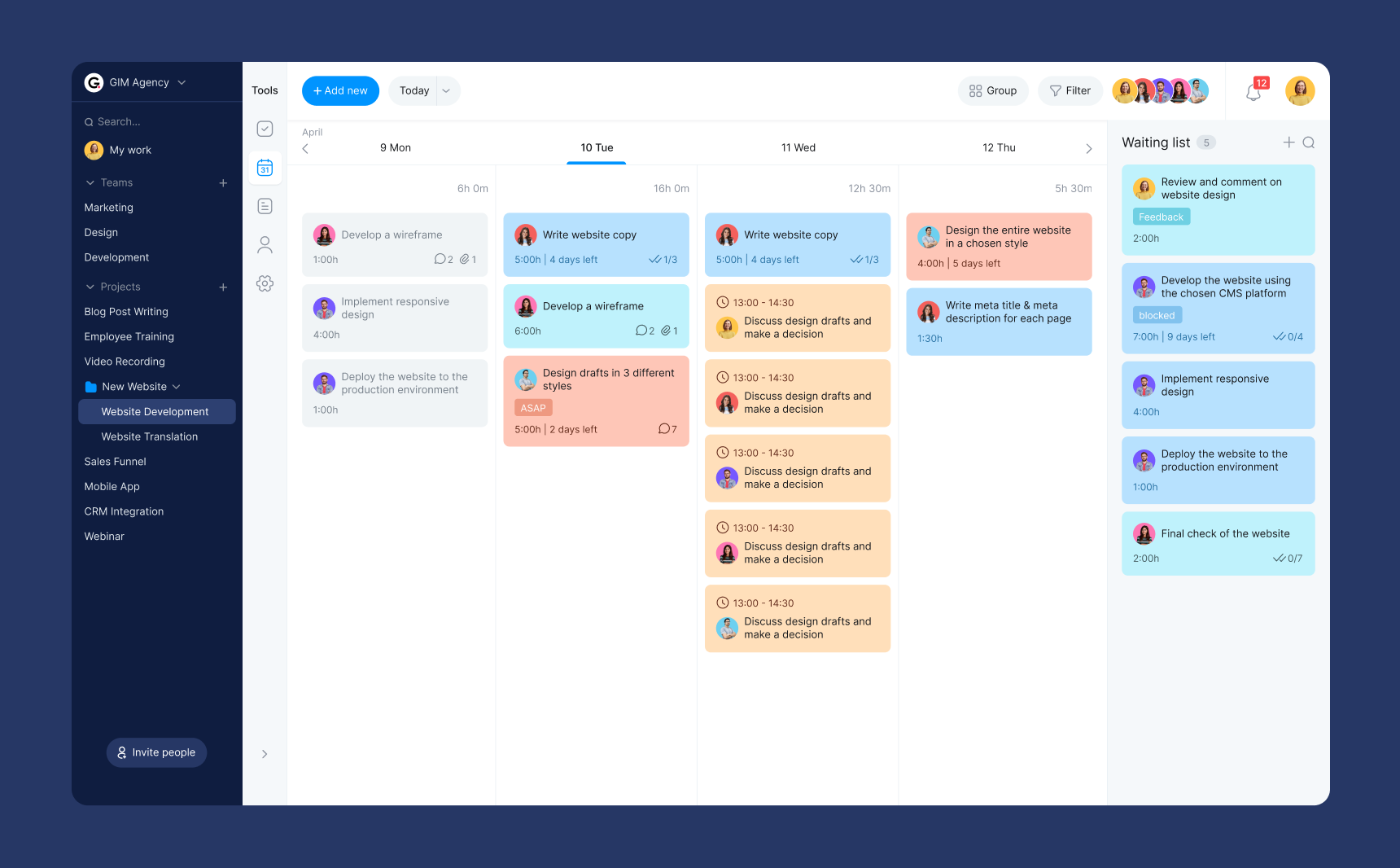Consider that you will introduce a new website for a small company. What are you going to do first? Before beginning a project, you should draft a project planning document explaining the project name, required objectives, purpose, schedule, and resources. Simply put, you should create a project charter.
Diving deeper: what is a project charter?
As part of a project management plan, the project charter establishes a clear vision for the project, helps all parties involved stay on the same page, and directs its advancement. A good project charter increases the likelihood that miscommunications or unclear expectations will prevent the project from going off course or failing. Thus, we realized that a project charter was necessary. However, what is it?
A brief, official project charter document explains a project’s objectives, scope statement, budget, timeline, key deliverables, and required resources. The project charter serves to provide the project manager with the all-clear to begin work while also providing stakeholders with a comprehensive understanding of the project’s goals and obstacles. It establishes a clear vision as the first step of project planning. A strong project charter includes the following components:
1. Project goals
The first and most obvious component is project goals. Clear and quantifiable goals are crucial because they establish precise results and project bounds, prevent scope creep, and guarantee that everyone knows the ultimate aims. Every objective, such as “launch a new website” or “enhance customer support response time by 25%,” should align with the project’s overarching purpose. Bordio’s online organizer can be quite the assistant here, as project managers can outline and share these goals, allowing team members to stay informed and aligned on expectations.
2. Project risks
Project managers can create backup plans by enumerating these risks and designating who will handle possible problems. Furthermore, by recognizing these risks, stakeholders may avoid being taken off guard and remain ready to act quickly if these risks materialize during the project lifecycle.
3. Project requirements
Requirements in project charters clarify the resources necessary to meet the project’s goals, including team roles, materials, and specialized team management software. This section also specifies project success criteria—measurable benchmarks that show whether the project is on track to achieving its objectives. For example, a website project may require web developers, designers, content creators, and a project budget allocation for software or hosting costs.
Success criteria could be as simple as “website meets loading speed standards” or “content passes quality review.” Clearly defined requirements ensure the team can plan effectively, making tracking progress and allocating resources easier.
4. Project timeline
The timeline section clarifies project details. It includes a project schedule that maps out key phases, milestones, and deadlines. Milestones might include completion dates for significant deliverables, such as a “draft website design completed” or “content loaded and reviewed.” A well-defined timeline helps project managers and teams monitor progress, making it easy to identify delays or areas needing adjustment. Bordio’s project task planner can assist in visualizing these milestones, enabling everyone to track deadlines and stay focused on completing tasks promptly.
5. Project resources
This part of a formal document involves key stakeholders, authorities, and project sponsors involved in the project. It outlines team roles, the project manager’s authority, and a projected budget to ensure everyone knows their tasks and the project’s financial scope.
For instance, it might specify the project manager’s role, involve key stakeholders in decision-making, assign particular team members to particular responsibilities, or establish budget caps for various project phases. By clearly defining resources early on, team members are held accountable, resource-related surprises are avoided, and the project’s goals are met while staying under budget.
Who writes the project charter?
The project manager usually leads the creation of the project charter, although drafting it requires team input, the project manager, sponsor, and critical stakeholders play significant roles.
The project manager is responsible for putting together the main elements of the charter, including the project objectives, scope, possible risks, and needed resources. They ensure these details align with strategic goals and business cases and can be realistically executed. Since the project manager handles the day-to-day work, they are best positioned to outline a clear plan that the team can follow.
The project sponsor, often a senior executive, guides and approves the charter. They review it to ensure it aligns with the company’s broader goals and contribute strategic insights about the project’s purpose and long-term vision. Their approval is essential, as it shows everyone involved that the project has support from upper management, reinforcing the team’s commitment to it.
Lastly, key stakeholders offer crucial insights and particular requirements because of their distinct viewpoints and areas of expertise. Department heads, subject-matter experts, and representatives from teams affected by the project’s results are examples of stakeholders. Their suggestions ensure that the charter considers any limitations, including operational interdependence or resource availability, and represents reasonable expectations. Encouraging a common understanding, this group’s input lessens the possibility of disagreements or miscommunications as the project progresses.
Steps to writing a project charter
Here’s a step-by-step guide to creating a successful project charter, from initial planning to final approval:
1. Getting familiar with the project
Learning about the project’s goals, parameters, and hazards is the first stage in creating a project charter. A detailed comprehension of these elements guarantees that the charter appropriately captures the project’s goals and limitations.
This phase frequently includes conversations with the project manager’s authority, sponsor, and pertinent stakeholders to get information. Project managers should try to make clear throughout these discussions:
- The project statement: What opportunity does the project want to seize, or what problem does it attempt to solve?
- The project scope: What is and is not part of the project? Specifying the scope early on, scope creep may be avoided later.
- Possible hazards: Are there any predictable difficulties or roadblocks? By identifying potential risks early on, the project team can take steps to either prevent issues or prepare for them.
With this data at hand, the project manager can create a charter that meets the needs of all stakeholders and sets the stage for a successful implementation phase.
2. Writing the charter
The project charter must be drafted when the project’s scope has been well understood. This project documentation should address the project brief:
- Objectives: Outlining the project’s objectives helps everyone agree on what success looks like. Pin the objectives in work management software.
- Risks: By outlining possible hazards, the team develops a proactive mentality and stays ready for obstacles. Risks may be associated with the availability of resources, technological difficulties, or short turnaround times.
- Schedule: A schedule with important deadlines and milestones helps set reasonable expectations and gives stakeholders a point of reference for monitoring the project’s development. Use the project management task tracker to create a schedule.
- Resources: Outlining the necessary funds, staff, and equipment guarantees everyone knows the assistance required to accomplish the project’s goals.
These elements must be balanced while writing the charter to produce a thorough yet uncomplicated text. The intention is to ensure the project’s objectives and needs are clear to everyone who reads the charter and doesn’t require further explanations.
3. Gaining sponsor approval
The project sponsor must approve the charter after it is written. Usually, the project sponsor is an executive or senior management who supports the project and has the power to assign resources. Their consent gives the initiative the official go-ahead to start, letting the team and interested parties know that the project has organizational backing.
During this review, the charter must be presented to the sponsor and reviewed to secure acceptance – the project’s objectives, parameters, and resource requirements. The sponsor may propose revisions to align the charter with available resources or strategic goals. The project officially begins when the sponsor formally adopts the charter following any required modifications.
4. Presenting it to project stakeholders
Following sponsor approval, the project management charter is presented to essential stakeholders. Team members, department leaders, and others affected by the project might all be considered stakeholders. Sharing the charter with them ensures everyone knows the project’s goals, schedule, and expectations.
This presentation is just a chance to discuss concerns, respond to inquiries, and resolve unclear passages in the charter. Approaching this phase emphasizing openness is crucial because it may help stakeholders feel more invested and avoid misconceptions. Presenting the charter also offers a chance to get input that might increase the project’s likelihood of success.
5. Customizing the project charter
A project charter can be tailored to meet particular needs, even though it often follows a conventional framework. A modest charter that addresses objectives, project scope statement, schedule, and resources could be adequate for straightforward projects. Complex projects, however, could need extra sections to cover particular elements like:
- Risk mitigation strategies: Projects with high uncertainty levels can benefit from clear plans to handle and reduce possible risks. Try using a risk assessment matrix to prevent possible failures. This helps the team prepare for and address issues more effectively.
- Communication plan: Creating a detailed plan for sharing information among stakeholders—including how often updates are given and through which channels—keeps everyone informed and aligned as the project progresses. Choose the right collaboration tool for remote teams if you have many remote workers.
- Roles and responsibilities of stakeholders: Defining each project team member’s roles and duties helps ensure accountability and smooth decision-making throughout the project. If your team works according to the Agile method, you choose from core Agile roles.
By being customized, the charter may function as a thorough guide that considers the project’s particular requirements. Stakeholders may trust the project’s direction more if they comprehend how its structure promotes effective results.
Visualizing the project in Bordio
After you finish the project charter, you move to the next stage—deep project planning—which includes visualization in project management software. Using visual tools like team task boards in project management simplifies the process of overseeing each stage of a project. Unlike traditional pepper planners, visual online project planners display tasks and their progression in a dynamic, interactive format, allowing real-time updates and adjustments.
Bordio’s task management board feature can be beneficial here. For instance, a Bordio’s Kanban board typically consists of columns representing various stages of a task’s journey, such as “To Do,” “In Progress,” and “Completed.”
Using a Kanban board in a project charter ensures that all team members have a visual representation of their responsibilities and project milestones. For example, on a board for a website launch project, tasks such as “Check final design,” “Write a blog post,” and “Test functionality of the site” could each have their task cards. As work is completed, these cards move from the “In Progress” column to the next – “Completed,” giving everyone a clear picture of where the project stands and what steps remain.
Moreover, Bordio’s customizable task statuses and color-coding options make it easy to categorize tasks by type or urgency, which helps streamline the process of identifying critical work areas. Unlike static project plans, visual tools like Bordio’s Kanban board allow real-time task updates, making it easier to adapt the project plan as new information or challenges arise. For instance, if a team member completes a task earlier than expected, the project manager can immediately reassign resources or shift priorities to take advantage of the additional time.
Project charter vs. Project plan
The easiest way to understand a project charter is to compare it to other project management papers. It’s a quick document made at the beginning of a project. The charter describes the new project’s goals, scope, vision, team roles, duties, and stakeholders. It usually consists of a few pages and acts as a preliminary roadmap for the project’s objectives.
A project plan, on the other hand, describes the project’s execution in greater depth. This plan serves as a guide for overseeing the project from start to finish. The project plan is created to act as an execution roadmap following stakeholder approval of the project charter. The plan details how each job will be accomplished, whereas the project charter offers a high-level overview. Both documents are related to one another and are essential to the project’s overall development.
The project plan clarifies the project’s value to the business and its stakeholders. It emphasizes details, such as creating a timetable with assignments, deadlines, and completion dates. The plan also identifies team members and their particular duties. List all deliverables and project expenses, create a work breakdown structure (WBS), and assign resources. This degree of specificity guarantees that all participants know their responsibilities and the project’s goals, which helps to ensure a successful conclusion.
Final Thoughts on Project Charter
The success of every project depends on having a well-organized project charter. It offers a framework for decision-making throughout the project’s lifespan, unites all stakeholders, and forms the basis for transparent communication. Project managers may guarantee that the project achieves its goals and position their teams for success by creating a clear and comprehensive charter. A project charter is essential for efficient project execution, from small-scale projects to multi-phase initiatives, regardless of the project size.
